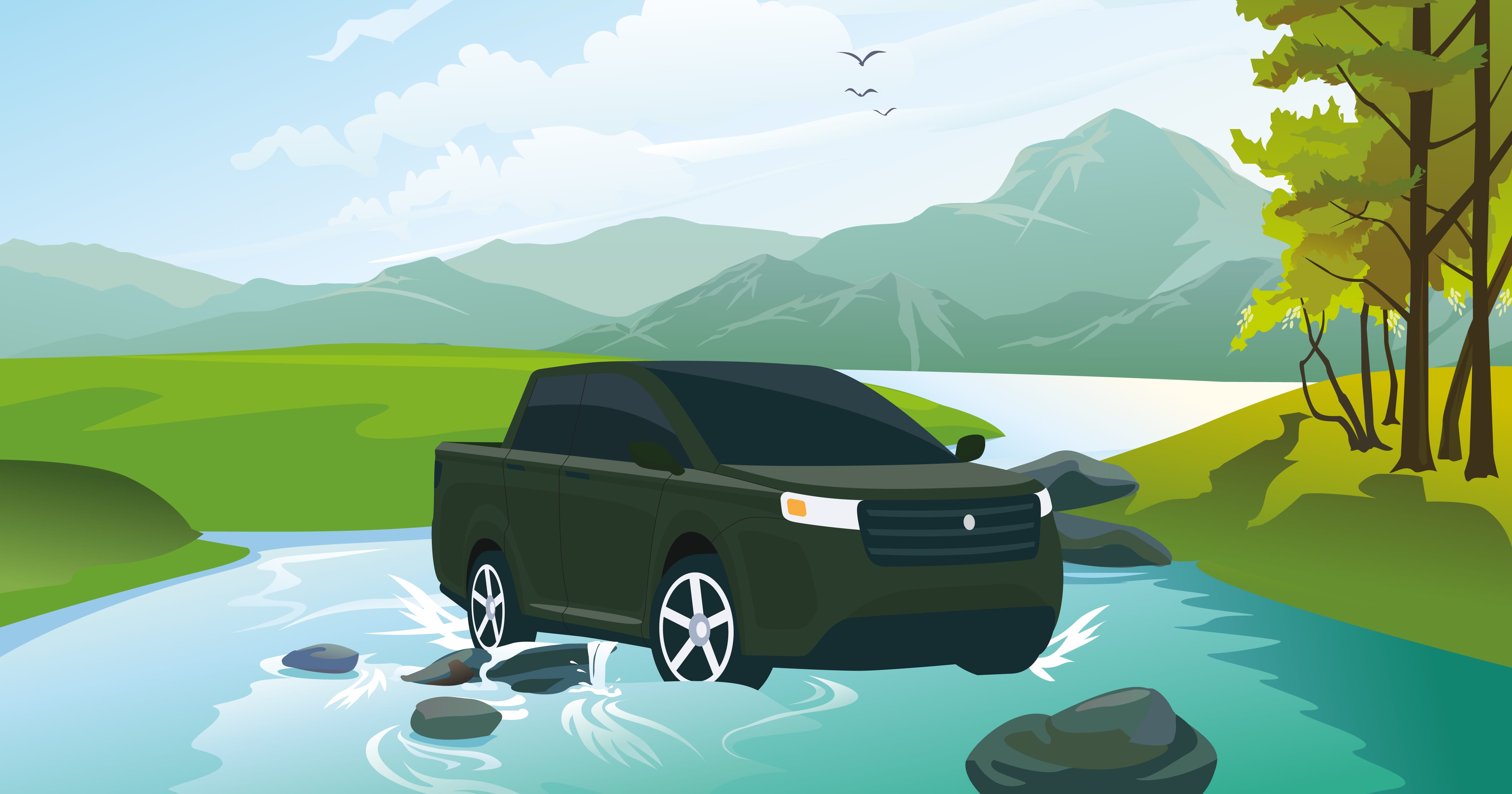Here in the UK, we’re used to more than our fair share of rain throughout the year, so when it comes to driving in the rain, we should know how to handle it. But what if you get caught out by flooding, pools of water or a ford in the road? These are potentially dangerous situations, and while a 4x4 should be able to handle water a little better, there are still limits.
This month at Milner Off Road, we’re going to give you some tips on how to drive through water with a 4x4, along with some key pointers to keep in mind for before, during and after your journey.

Monitor the news
The first thing you should do is keep yourself abreast of the latest news and weather reporting. If there is going to be flooding in your local area, then you can try to avoid taking your vehicle out or possibly work out routes that are less affected by flooding.
Even for torrential downpours, it only takes a few drains to become blocked for roads to become overwhelmed with standing water. This means that you’re more likely to hit bodies of water, so if your area is prone to these issues, try to avoid using your vehicle or take another route.
How to drive through water
Let’s start by pointing out that it’s always advisable to know your limits. When it comes to driving through water, it’s not always as easy as it might seem, so don’t attempt to drive through if you notice the following:
- Fast-moving floodwater - this means there could be unseen currents capable of causing you to lose control or worse, becoming carried away in the flow of the water.
- High water levels - Naturally, 4x4s are often a little higher off the ground compared to other cars, but when it comes to your exhaust, you generally just need to make sure you don’t stall. The pressure from your exhaust may be able to keep water from flowing inwards, but only if you keep moving.
- Changing water levels - Even if one part of the water looks shallow to begin with, if you don’t know the road well enough and can’t see the other side, there is the potential for it to become deeper than you realise.
If you absolutely have to drive through water, you’re confident it’s low enough and you’re confident it isn’t flowing floodwater, then the following should help you navigate safely:
- Check that there aren’t oncoming vehicles and let them pass if there are to avoid creating waves against one another. There is often a shallow route everyone wants to take, so you’ll need to take it in turns and be patient if other vehicles are attempting to drive through the water.
- Approach the water slowly but gradually speed up to push water away. If you hit any water at speed - even in light rain - you could lose control due to aquaplaning. You want to get to a speed that creates a bow wave to move water away.
- Stick to the highest part of the road. Most roads will slope towards the edges naturally for drainage purposes; for this reason, you’ll often see people driving through the middle of roads when they become flooded to give the best chance of passing through.
- Keep your 4x4 moving and don’t stop until you reach the other side of the body of water. This is important because, although you need to move slowly, you need momentum to make it through. If you stop at any point, you’re at serious risk of water entering your exhaust.
- Dry your brakes. Once you’ve made it through the water, the chances are that your brakes may have got wet, reducing how well they perform when called upon. Drive slowly and gently engage your brakes to dry them — if they don’t respond effectively, bring your vehicle to a stop and wait for them to dry out.
Air intake
The advice for most standard cars is that they shouldn’t be driven through water, because engines require a certain amount of clean air intake. Water flooding the engine is a recipe for disaster and is a common reason people break down when attempting this.
For a 4x4, the height difference helps a little, but it’s recommended that you have a snorkel fitted if you know you’ll be driving through water regularly. This keeps your engine intake clean and dry whether you off-road in areas with fords or if you know your region is prone to flooding.
At Milner Off Road, we provide a range of snorkels for 4x4s, allowing you to kit your vehicle out for the right conditions.
Keep an eye out for:
- Kerbs and other hazards below the water - murky water hides these things and can contribute to an accident even in low bodies of water.
- Contaminated floodwater - any water in the road could be contaminated, so always avoid getting out and walking through these areas.
- Fords - some roads run through shallow rivers, and while it may seem safe to cross because it’s been designed that way, always beware that the speed of the water and how deep it goes can change depending on the weather.
With same-day dispatch on your order, whatever it is you need for your 4x4, you can have confidence it’ll be with you as quickly as possible when you order with us. From snorkels and brake discs to winching and towing, we help you add resilience to your vehicle. Browse our tools and parts today or call our team of advisors if you need assistance finding the right item.

-min.png)
